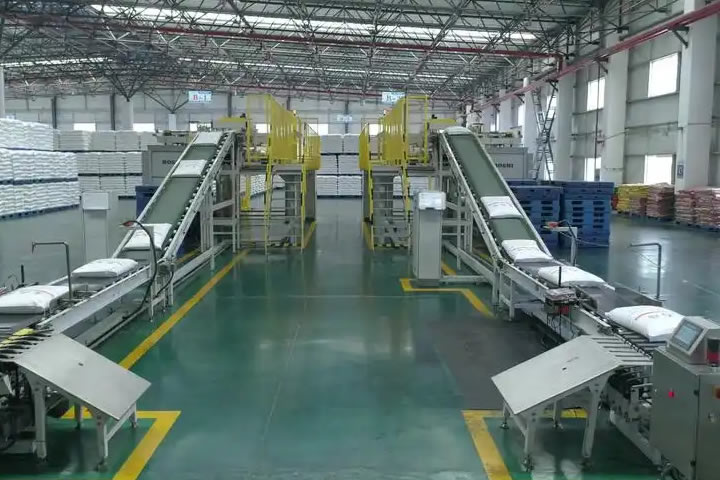In the late autumn of last year, when the first bag of titanium dioxide fell smoothly from our newly installed chemical powder packaging line in the Shanxi chemical plant area, Director Wang, who was standing in the monitoring room, suddenly had red eyes. This old master who has been dealing with dangerous goods for 30 years, pointed to the real-time dust concentration data displayed on the screen and murmured: "After so many years, I finally saw a workshop that can breathe while packaging."
The origin of this project is quite dramatic. Late one night three years ago, I received an emergency call from a customer in Shandong. Their original chemical powder packaging line suddenly exploded when filling metal magnesium powder. When our engineering team arrived at the scene, looking at the charred wreckage of the equipment, Chief Technical Engineer Lao Chen squatted on the ground and picked up a deformed part: "It's time to put on bulletproof vests for these gunpowder barrel-like workshops."

The core of the explosion-proof packaging equipment we designed for the Shanxi project is the triple protection of "prevention, isolation, and suppression". Unlike the traditional open chemical powder packaging line, our equipment is like a sophisticated crystal palace - in a fully enclosed stainless steel cabin, the automatic weighing module and the screw feeder are gently wrapped by a nitrogen curtain. What I am most proud of is the dust concentration sensing system, which can detect danger 0.5 seconds earlier than the human eye and instantly activate the isolation valve. I remember that on the day of the trial operation, the safety officer Lao Zhou stared at the monitoring screen for a long time, and suddenly slapped his legs and laughed: "This equipment is more strict than my wife!"
In terms of filling accuracy, we have broken through the industry's difficulties. The unique adsorption and fluidity of chemical powders often make weighing a "guessing weight". Our engineering team got inspiration from the medicine scales in Chinese pharmacies and developed a swing-arm dynamic compensation system. During a return visit last month, the workshop director excitedly showed the record book: "98.6% of the packaging bags have an error of no more than one tablespoon, which was unthinkable before."
This chemical powder packaging line has a hidden skill - modular transformation. Last winter, the company received a temporary order for nano-graphite powder, and we completed the full replacement from the feeding screw to the packaging nozzle in just three days. Watching the equipment smoothly handle materials finer than flour, the operator Xiao Zhang joked: "This equipment knows how to handle it with care better than my cat."
What touched me most recently was the video email I received last month. In the picture, the workers are wearing ordinary work clothes and working freely in the packaging workshop, and our explosion-proof packaging equipment is swallowing and spitting out titanium dioxide bags in the background. Director Wang gave a thumbs up in the camera: "Since the change of this chemical powder packaging line, there has been no 'white-faced people' (referring to workers covered in dust) in our workshop." This reminds me of the days when we were dyed into colorful people in the test chamber during the R&D stage, and those tests with loud sneezes were finally worth it.
Now, every time I pass by the "Meritorious Equipment Wall" in the factory, I always stop in front of the prototype. The dense improvement labels on it record the more than 700 days and nights we have been fighting with the chemical powder packaging line. Next month, we will deploy upgraded explosion-proof packaging equipment for a lithium battery material company in Xinjiang. If you are also looking for a packaging solution that understands safe production and "gentle" high-risk materials, please feel free to chat with us at any time - after all, in the beating data curves in the chemical plant, there are too many life pulses worth protecting.

